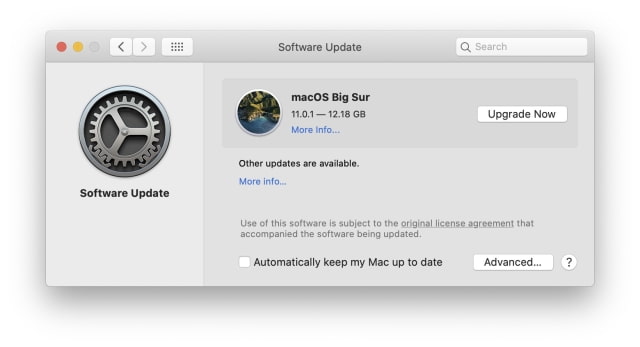
Once the installer has loaded up, click on Disk Utility. Select the USB drive you plugged in and press Return on the keyboard.

As soon as you press the power button hold down the Option key on your Mac. Plug in the bootable USB into your Mac’s USB port and turn on your Mac.
How to Create macOS Big Sur Installer USB. Once you are done, return here and we will guide you till the end of the installation process. Head over to our tutorial linked below on how to create a bootable installer USB. Therefore it is highly recommended that you take a backup of everything before moving forward. In other words, you will lose your files and settings. Backup All the Thingsīefore you event lift a finger, it’s important to know that this method will wipe your drive clean. Sure, it is a little tricky as it involves downloading the macOS Big Sur installer then creating a bootable USB out of it, but in the end, your installation of Apple's new OS will offer boss levels of performance. But, if you want to experience the best of macOS Big Sur, then it is a good idea to perform a clean install. If you don’t know the password for the root user, follow this Apple support page (Opens in a new window) to learn how to change this password.Most of you might not even care about that at all. Rather, it’s the password for the root user on your Mac. This is not the password for the account that you use to log in. OS X El Capitan: sudo /Applications/Install\ OS\ X\ El\ Capitan.app/Contents/Resources/createinstallmedia -volume /Volumes/ MyVolume -applicationpath /Applications/Install\ OS\ X\ El\ Capitan.app MacOS High Sierra: sudo /Applications/Install\ macOS\ High\ Sierra.app/Contents/Resources/createinstallmedia -volume /Volumes/ MyVolume MacOS Mojave: sudo /Applications/Install\ macOS\ Mojave.app/Contents/Resources/createinstallmedia -volume /Volumes/ MyVolume 
MacOS Catalina: sudo /Applications/Install\ macOS\ Catalina.app/Contents/Resources/createinstallmedia -volume /Volumes/ MyVolume MacOS Big Sur: sudo /Applications/Install\ macOS\ Big\ Sur.app/Contents/Resources/createinstallmedia -volume /Volumes/ MyVolume Replace the string My Volume with the volume name of your USB drive. At the Terminal prompt, type one of the following commands, depending on your version of macOS. Return to the Utilities folder on your Mac and open the Terminal app. Make sure the USB drive is still connected to your Mac.


How to Set Up Two-Factor Authentication.How to Record the Screen on Your Windows PC or Mac.How to Convert YouTube Videos to MP3 Files.How to Save Money on Your Cell Phone Bill.How to Free Up Space on Your iPhone or iPad.How to Block Robotexts and Spam Messages.








 0 kommentar(er)
0 kommentar(er)
